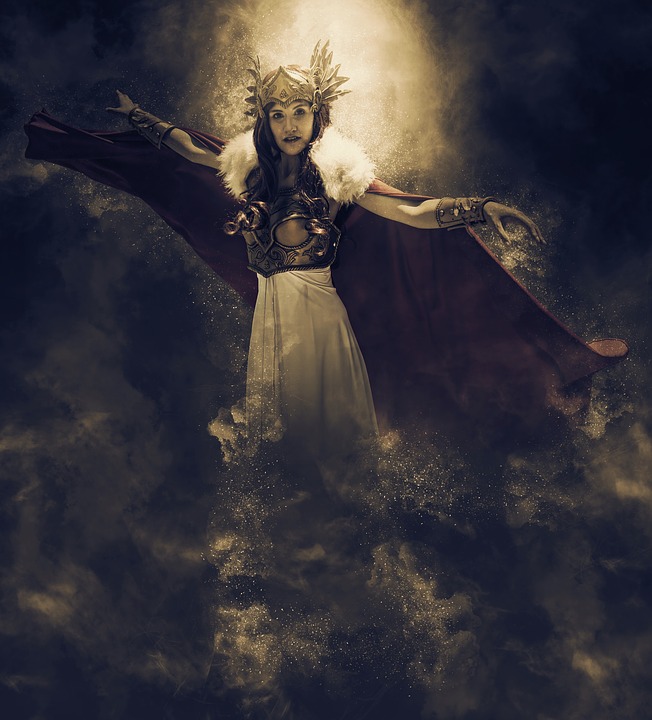Before Air Dolomiti, before the Wright brothers and the
Montgolfier brothers, even before
Leonardo Da Vinci’s flying machines, before any of these revolutionary inventions, humans could only fly in their wildest imaginations.
In ancient times, we looked to the sky, hungry for knowledge, observing celestial bodies, weather phenomena and the flight of birds with curiosity and fear of that which was forbidden and yet fascinating above all else. This is how mythology was born; the system of stories and beliefs that form the basis of all cultures. Myths could explain the inexplicable, challenging the laws of physics and daring to explore topics humans could not yet understand.
Flight is one of the themes that most frequently comes up in both mythology and in many religions.
Many of us remember the story of
Icarus and his father Daedalus, who built and wore wings made of feathers and wax in order to escape from Crete, since they knew the secrets of the labyrinth that Minos built to imprison the horrific Minotaur. Not too dissimilar to Icarus is
Wayland the Smith (Wieland der Schmied), a character from Germanic mythology who could forge indestructible swords, armour and wings to fly thanks to the techniques he learned from the dwarves, who were skilled blacksmiths.
Fūjin, the Shinto god of the wind, one of the most ancient figures in the Japanese religion, took a different approach to flying. Fūjin was depicted as an individual with a green body and no wings, but he was able to fly thanks to a cloth that, as it expanded with the wind, would lift him from the earth like a rudimentary hang-glider.
In Philippine mythology, influenced by superstitions from pre-Christian religions and Hinduism, we have
Ekek and Wakwak, winged humanoid creatures more similar to nocturnal animals or vampires and often hunting for innocent victims.

Another mythological trend is that of flying horses:
Pegasus, the symbol of freedom who soars and turns into a constellation; the
Valkyries, courageous warriors at the service of Odin and illustrated in Scandinavian mythology on the backs of winged horses; the
Hippogriff, a magnificent winged creature which is half horse and half eagle, with the head and wings of an eagle and the hind half of a horse, well known to fans of Ludovico Ariosto’s
Orlando Furioso and, of course…
Harry Potter. :)

With our noses to the sky and our need to conquer the unknown, humans have always created fictional stories connecting flight to the unknown powers that be or to the gods.
For many centuries, until the era of the great inventions, flight was only possible in the world of magic.
Who would have thought that in a not-too-distant future flight would become the most popular transportation to shorten time and distances?

 Another mythological trend is that of flying horses: Pegasus, the symbol of freedom who soars and turns into a constellation; the Valkyries, courageous warriors at the service of Odin and illustrated in Scandinavian mythology on the backs of winged horses; the Hippogriff, a magnificent winged creature which is half horse and half eagle, with the head and wings of an eagle and the hind half of a horse, well known to fans of Ludovico Ariosto’s Orlando Furioso and, of course… Harry Potter. :)
Another mythological trend is that of flying horses: Pegasus, the symbol of freedom who soars and turns into a constellation; the Valkyries, courageous warriors at the service of Odin and illustrated in Scandinavian mythology on the backs of winged horses; the Hippogriff, a magnificent winged creature which is half horse and half eagle, with the head and wings of an eagle and the hind half of a horse, well known to fans of Ludovico Ariosto’s Orlando Furioso and, of course… Harry Potter. :)
 With our noses to the sky and our need to conquer the unknown, humans have always created fictional stories connecting flight to the unknown powers that be or to the gods.
For many centuries, until the era of the great inventions, flight was only possible in the world of magic.
Who would have thought that in a not-too-distant future flight would become the most popular transportation to shorten time and distances?
With our noses to the sky and our need to conquer the unknown, humans have always created fictional stories connecting flight to the unknown powers that be or to the gods.
For many centuries, until the era of the great inventions, flight was only possible in the world of magic.
Who would have thought that in a not-too-distant future flight would become the most popular transportation to shorten time and distances?